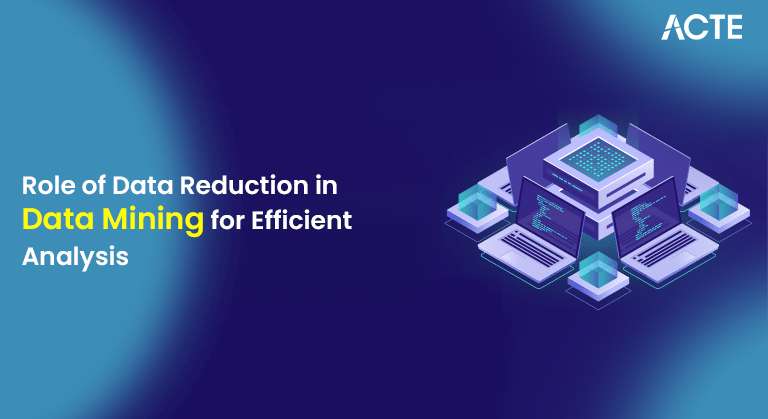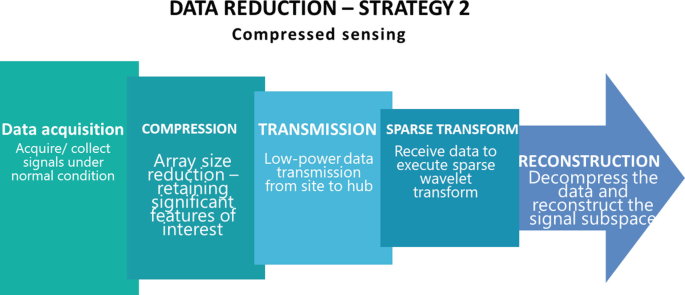
- Introduction to Data Mining
- The Need for Data Reduction in Data Mining
- Key Techniques of Data Reduction
- Benefits of Data Reduction
- Challenges in Implementing Data Reduction
- How Data Reduction Improves Efficiency
- Real-World Applications of Data Reduction
- Conclusion
Introduction to Data Mining
Finding patterns, connections, and important information in big databases is known as data mining. Data Reduction in Data Mining is an interdisciplinary field that incorporates methods from artificial intelligence, database systems, machine learning, and statistics. One of the most difficult parts of data mining is managing the enormous volume of data that is frequently produced in different businesses. Large datasets provide insightful information but present several challenges, including longer calculation times, higher storage needs, and more complex analysis. Data minimization is crucial in Data Science Course Training situation. By lowering the volume and complexity of data without sacrificing important information, data reduction techniques aid in streamlining and speeding up the data mining process.
The Need for Data Reduction in Data Mining
Massive datasets are frequently used in data mining jobs, and studying them can be time-consuming and computationally costly. Furthermore, algorithms may not scale appropriately when data is too big, leading to ineffective analysis, increased memory utilization, and longer processing times. Not every data set in a dataset is Macros in Excel helpful for analysis. The method is considerably easier to handle when the dataset’s size is decreased while keeping the most pertinent and intuitive features. This allows data mining algorithms to work more effectively and efficiently, improving the speed and quality of data analysis. Data reduction techniques can help in several ways:
- Improved computation speed: Reducing the volume of data allows algorithms to run faster and scale better.
- Storage efficiency: Smaller datasets require less storage, essential when working with large-scale data in industries like healthcare or finance.
- Simplified model training: Reducing irrelevant or redundant features in the dataset can lead to better, more generalizable models.
Unlock your potential in Data Science with this Data Science Online Course .
Key Techniques of Data Reduction
There are several approaches to reducing data, each with advantages and applications. The main techniques of Data reduction strategies in data mining include:
Sampling
Sampling is the choice of a representative group of data from a larger dataset. The goal is to extract a subset of the data that best represents the key characteristics of the entire dataset. Sampling is practical when A Algorithm in AI with large datasets where analyzing the entire dataset is computationally expensive or impractical. Machine learning models can then be trained or analyzed using this smaller sample. There are two main types of sampling:
- Random Sampling: In this approach, data points are selected randomly, ensuring that each has an equal chance of being selected.
- Stratified Sampling: This method divides the data into different strata (groups based on specific characteristics) and then samples data from each group.

Feature Selection
Feature selection focuses on reducing the number of features (variables or columns) used in the dataset. The goal is to identify and retain only the most essential features for analysis. By eliminating irrelevant, redundant, or noisy features, feature selection improves the performance of machine learning models and reduces overfitting. There are several techniques for feature selection:
- Filter methods: These methods evaluate the relevance of each feature based on statistical measures (e.g., correlation with the Count in Excel Formula And Implementation variable).
- Wrapper methods: These methods use a predictive model to evaluate the usefulness of subsets of features.
- Embedded methods: These methods perform feature selection during the model training process, such as with decision trees or LASSO (Least Absolute Shrinkage and Selection Operator).
- Faster processing time: Reducing the amount of data means less computational time is needed to process and analyze it. Data Science Course Training is particularly important in real-time data mining tasks.
- Improved algorithm performance: Data reduction strategies helps avoid the curse of dimensionality, where too many features can lead to overfitting and lower model accuracy. By focusing on the most critical features, models can perform better.
- Lower storage costs: Smaller datasets require less storage space, which can be crucial when dealing with big data.
- Easier visualization: With fewer data points or features, visualizing trends and patterns becomes more straightforward, helping data scientists draw insights more quickly.
- Loss of information: In some cases, data reduction techniques may result in the loss of valuable information. For example, reducing features or sampling data might exclude critical patterns important for analysis.
- Choosing the right technique: Artificial Intelligence Present and Future is crucial to select the appropriate data reduction method. The wrong choice could lead to ineffective models or the loss of critical insights.
- Balancing complexity and simplicity: While reducing data simplifies the analysis, a balance must be struck. Too much reduction can make the analysis oversimplified and less meaningful, while too little reduction may lead to inefficiencies and longer processing times.
- Decrease in computational overhead: Eliminating features or superfluous data greatly decreases the amount of computing needed to process the Lightgbm Algorithm . As a result, machine learning models run more quickly.
- Scalability: Thanks to data reduction, algorithms can scale effectively when dealing with large datasets. To operate within the system’s memory constraints, large datasets can be sampled or aggregated.
- Better judgment: With a smaller dataset that still includes important information, Data reduction strategies can conduct more focused research and swiftly arrive at better judgments.
- Healthcare: In medical research, data reduction simplifies complex patient records, enabling faster diagnoses and more accurate predictions.
- Finance: Financial analysts use Data minimization to process large amounts of transaction data, helping to detect fraud, predict stock trends, and VBA in Excel .
- Marketing: Retailers and marketers apply data reduction to consumer behavior data to identify trends and target the right customer segments with personalized offers.
- Telecommunications: Telecom companies reduce large amounts of call data to detect network issues, optimize services, and improve customer satisfaction.
Learn how to manage and deploy cloud services by joining this Data Science Online Course today.
Feature Extraction
Unlike feature selection, which removes irrelevant features, feature extraction creates new, compact features by combining existing ones. Data Reduction in Data Mining process transforms the original feature space into a smaller, more informative one. One typical example of feature extraction is Principal Component analysis (PCA). PCA transforms high-dimensional Data minimization into a set of Bayesian Network in AI components that capture the majority of the variance in the data, helping to reduce the dimensionality while maintaining most of the vital information.
Data Aggregation
Data aggregation is summarizing or combining data to reduce its size. This method combines individual data points to form higher-level summaries, such as calculating the average, sum, or count for a group of related data points.
Benefits of Data Reduction
Data reduction offers several benefits that make the data mining process more efficient:
Looking to master Data Science? Sign up for ACTE’s Data Science Master Program Training Course and begin your journey today!
Challenges in Implementing Data Reduction
Despite its many advantages, data reduction is not without its challenges. Some of the common challenges include:

How Data Reduction Improves Efficiency
Data reduction plays a crucial role in improving efficiency during the data mining process. Here’s how:
Boost your chances in Data Science interviews by checking out our blog on Data Science Interview Questions and Answers!
Real-World Applications of Data Reduction
Data reduction techniques are widely applied in various industries:
Conclusion
Data reduction is essential to make data mining more productive, efficient, and controllable. Data reduction strategies aid in streamlining the analysis process by Data minimizing the amount of data while preserving important information. Data Science Course Training enhances the efficiency of data mining algorithms and guarantees faster, more precise results. Data reduction techniques must be used carefully to prevent information loss or misunderstanding. Data Reduction in Data Mining may significantly improve the speed and quality of analysis with the proper methods and a thorough grasp of the data structure, which will ultimately result in improved decisions and outcomes in various industries, including marketing, finance, and healthcare.





